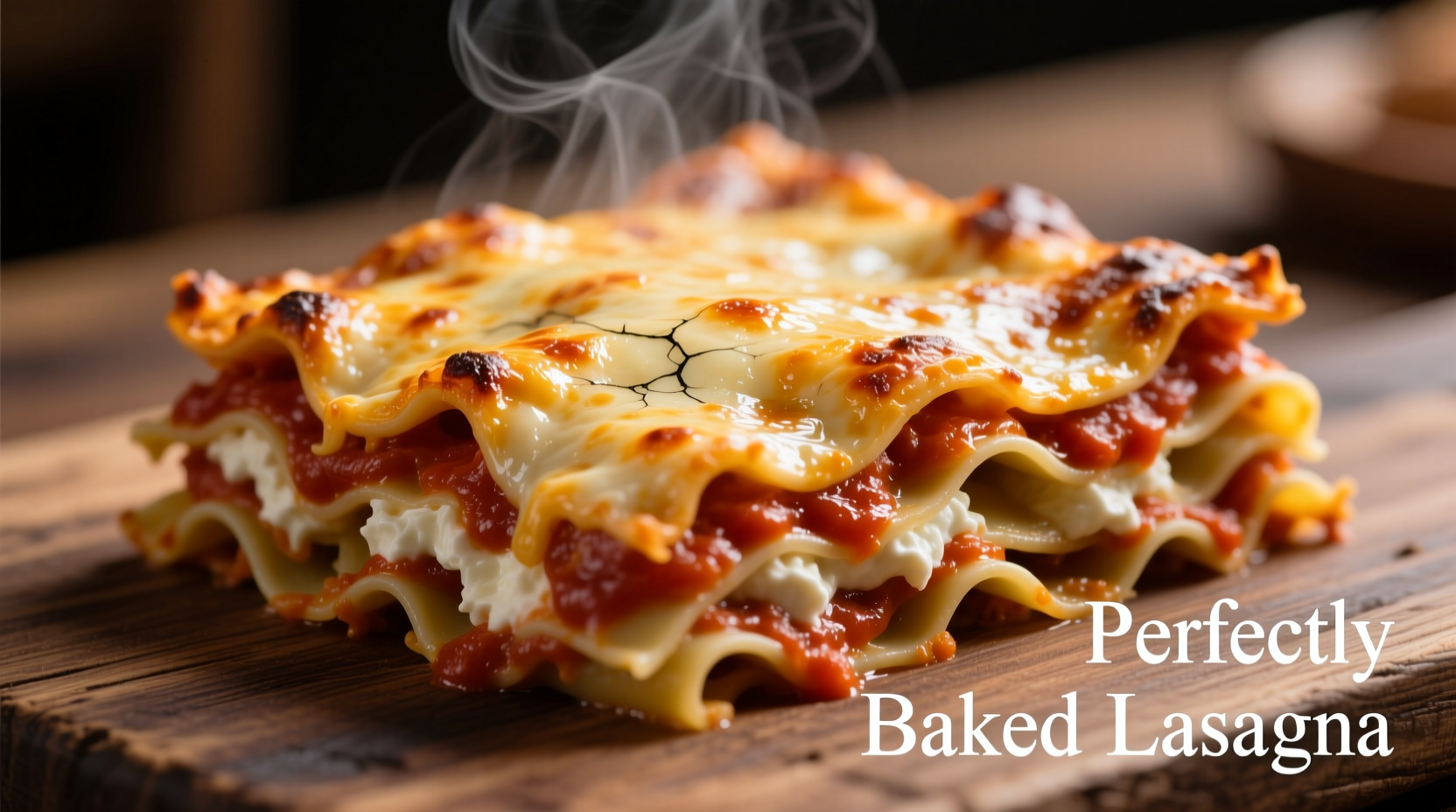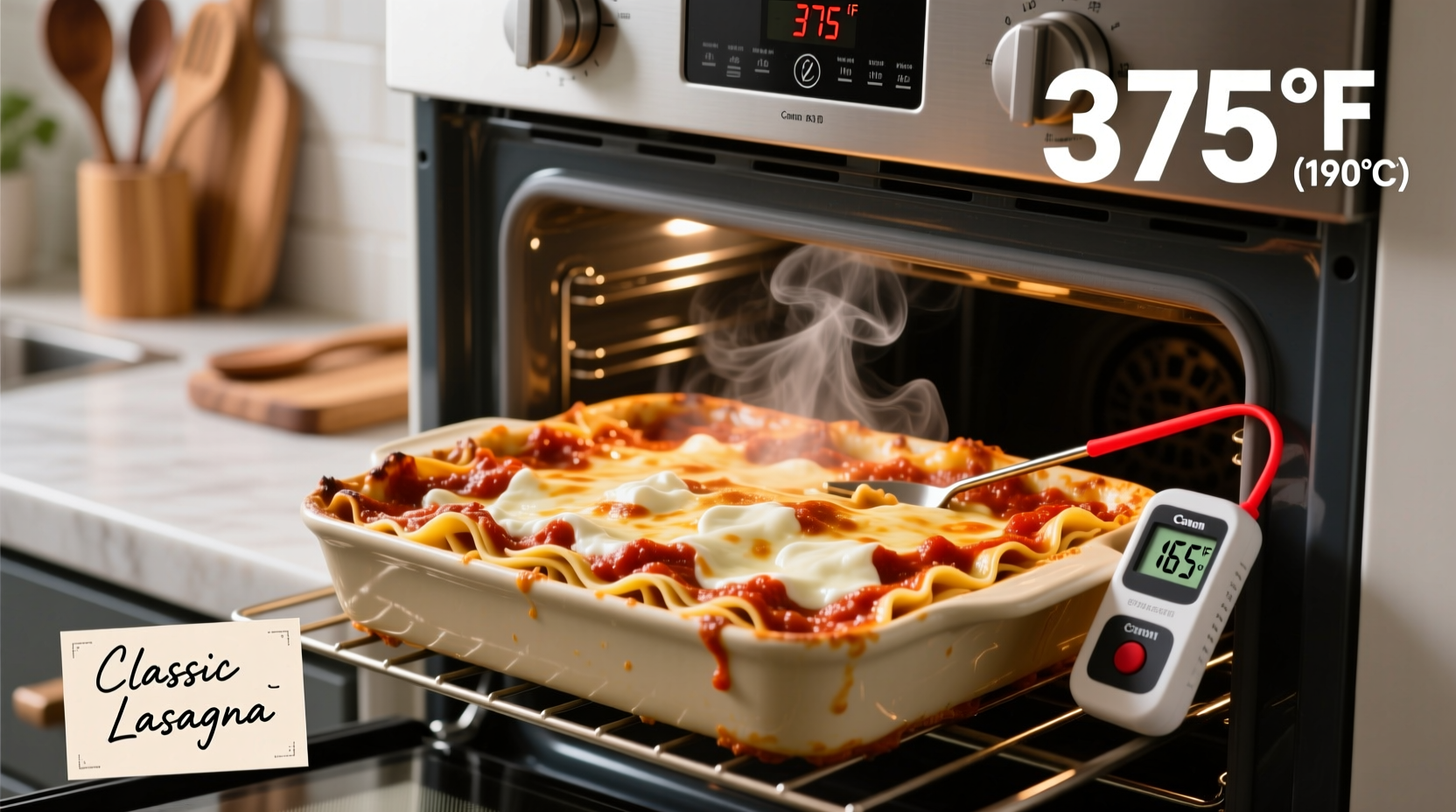
Why Temperature Matters for Your Lasagna Success
Getting the temperature right for lasagna isn't just about following a recipe—it's food science meeting culinary tradition. Lasagna's layered structure creates unique heating challenges that require precise temperature control. When you bake at the proper temperature, you achieve three critical outcomes:
- Food safety—reaching 165°F (74°C) throughout eliminates harmful bacteria
- Texture perfection—pasta cooks through without becoming mushy
- Flavor integration—ingredients meld together while maintaining their distinct characteristics
The Science Behind Lasagna Baking Temperatures
Lasagna presents a special challenge because it contains multiple components with different moisture contents and thermal properties. The USDA Food Safety and Inspection Service confirms that cooked food must reach 165°F internally to be safe, but lasagna requires additional considerations beyond just the final temperature.
| Component | Ideal Temperature Range | Why It Matters |
|---|---|---|
| Pasta Sheets | 180-200°F (82-93°C) | Completes cooking without becoming mushy |
| Cheese Layers | 150-160°F (65-71°C) | Melts properly without separating or burning |
| Meat Sauce | 165°F+ (74°C+) | Ensures food safety while maintaining texture |
| Final Product | 165°F (74°C) | Safe throughout with optimal texture |
Adjusting Temperature for Your Specific Situation
While 375°F (190°C) works for most standard lasagna recipes, several factors may require temperature adjustments. Understanding these variables helps you adapt like a professional chef rather than following recipes rigidly.
Convection vs. Conventional Ovens
If using a convection oven (which circulates hot air), reduce the temperature by 25°F (about 15°C). So instead of 375°F, set your convection oven to 350°F (175°C). Convection ovens cook more evenly but can dry out dishes if temperature isn't adjusted.
Frozen vs. Fresh Lasagna
For frozen lasagna, the University of Minnesota Extension recommends:
- Thaw completely in refrigerator first (best results)
- If baking from frozen: start at 400°F (200°C) for 20 minutes, then reduce to 350°F (175°C)
- Expect 25-30% longer cooking time than fresh lasagna
Meat vs. Vegetarian Variations
Meat lasagnas often require slightly higher temperatures because:
- Raw meat needs thorough cooking (165°F internal)
- Meat releases moisture that must evaporate
- Denser fillings require more heat penetration
Vegetarian versions can sometimes bake at 350°F (175°C) since vegetables typically require less cooking time.
Step-by-Step Temperature Guide for Perfect Lasagna
Follow this professional chef-tested temperature protocol for consistently excellent results:
- Preheat properly—Allow 20-25 minutes for oven to reach exact temperature
- Initial baking—Cover with foil and bake at 375°F (190°C) for 30 minutes
- Uncover phase—Remove foil, increase to 400°F (205°C) for 10-15 minutes for browning
- Final check—Verify internal temperature reaches 165°F (74°C) in multiple spots
- Resting period—Let stand 15 minutes before serving (temperature continues to rise 5-10°F)
Troubleshooting Common Temperature Problems
Even with the right temperature setting, issues can arise. Here's how to diagnose and fix them:
Soggy Lasagna Despite Proper Temperature
This common problem usually stems from:
- Excess moisture in ingredients (especially fresh vegetables)
- Insufficient pre-baking of meat sauce
- Not resting after baking
Solution: Simmer sauce longer before assembly, use no-boil noodles, and always let lasagna rest 15 minutes after baking.
Burnt Top but Cold Center
This indicates improper heat distribution. Try these fixes:
- Cover with foil during first 30 minutes of baking
- Position oven rack in lower third of oven
- Reduce temperature by 25°F and extend cooking time
Professional Chef Tips for Temperature Perfection
Based on my experience working in professional kitchens, here are temperature techniques that make the difference between good and exceptional lasagna:
- The foil trick—Loosely tent foil over lasagna (don't seal edges) to trap steam initially, then remove for final browning
- Rack positioning—Place lasagna in lower third of oven to prevent cheese burning while ensuring bottom cooks through
- Thermometer testing—Check temperature in center and near edges (lasagna often cooks faster at edges)
- Resting is cooking—The residual heat continues cooking your lasagna during the 15-minute rest period
When to Trust Your Judgment Over the Thermometer
While precise temperature matters, experienced cooks develop additional sensory indicators:
- Bubbling pattern—Active, steady bubbling around edges indicates proper heat penetration
- Steam test—When you insert a knife, steam should billow out consistently
- Noodle flexibility—A properly cooked noodle should bend without breaking but offer slight resistance
Remember that lasagna continues cooking after removal from the oven. Pull it out when it's almost perfect, as residual heat will finish the process during resting.
Conclusion: Mastering Lasagna Temperature
Perfect lasagna temperature isn't just about setting your oven dial—it's understanding how heat interacts with layered ingredients. By following the 375°F (190°C) standard while adjusting for your specific circumstances, checking internal temperature, and allowing proper resting time, you'll consistently achieve restaurant-quality results at home. The key is balancing food safety requirements with culinary excellence to create a dish that's both safe to eat and deliciously satisfying.











 浙公网安备
33010002000092号
浙公网安备
33010002000092号 浙B2-20120091-4
浙B2-20120091-4